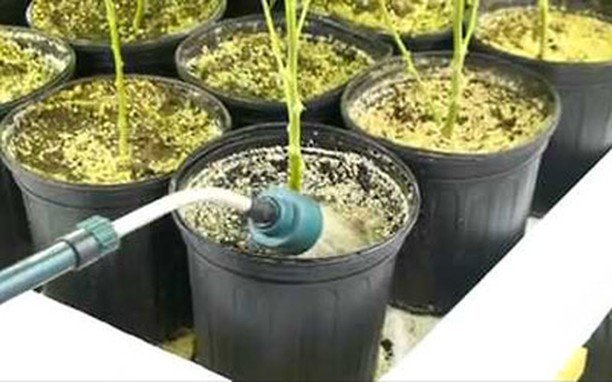What Flushing Does (and Doesn't) Do
Some growers believe that flushing is absolutely 100% necessary for a smooth, clean, and aromatic harvest. However, in opinion polls from several growers around the world, some growers don’t flush a single time and their harvests are fabulous. What does that mean for you?
- Flushing is helpful for growers who use lots of nutrients in their feeding regimen
- Flushing will help clear out some of those nutrients and minerals your plant’s still storing
- Flushing also helps the absorption of the remaining sugars in your plants, which will help their flowers and fruit health a little more before they’re chopped down.
- Flushing’s also a good idea between the vegging and flowering stage to help free plants up to take in flowering nutrients
When and How to Flush Your Plants
There are three main times you’ll want to flush your plants: 1) When a plant is overloaded with nutrients. When nutrient lockout occurs the tips of your leaves will turn yellow and brown, then dry up and possibly die. Indicative of overfeeding, you’ll want to flush your plants when there are simply too many nutrients for the plant absorb easily. 2) Between the vegging and flowering cycle. This will help prepare your plants to take in flowering nutrients by absorbing and clearing out those grow/vegging nutrients. While not 100% necessary, this will help transition your plants into a brand new feeding plan. 3) You guessed it- around harvest time. Now, this will be different from plant to plant and from medium to medium. Some plants are flushed within two weeks like soil plants, whereas other plants flush for only 2-3 days like when you grow hydroponically. No matter when your plants call for it, flushing them will help any nutrients left in your plants to be either absorbed or wasted.
Now, executing a flush can be done in one of two ways: either by using straight pH’d water or using clearing/salt leaching solution. While the goal of both techniques is the same, using a solution will help break down leftover minerals to use them or lose them. Using only water will help make nutrients in your plants available for absorption or waste. We should note that while the goal of flushing is to get everything out of your plant, understand that it’s virtually impossible to detect how much of a particular nutrient/mineral is present in a plant. That said, when you choose to flush, don’t break your back trying to get 0 ppm, just get as close to it as you can to assure that your plants have absorbed what they can and waste what they don’t.

1 comment
Anthony Williams
Very helpful explained well answered all my questions I been looking for in the past few days